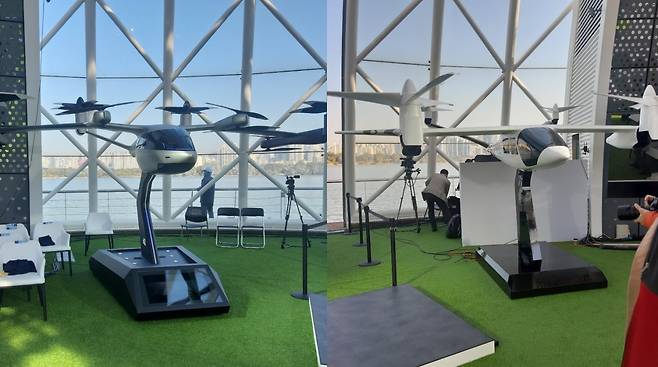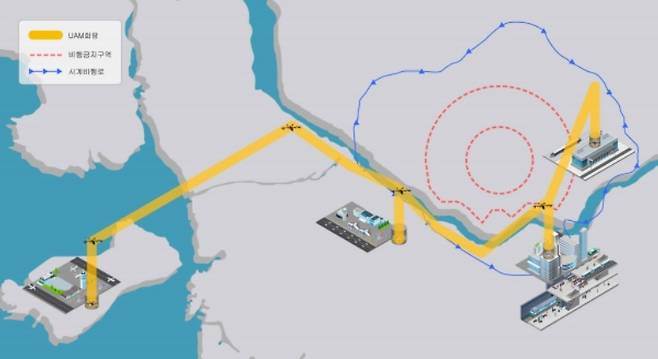[Newsmaker] Transport ministry lays out plans for 'flying taxis' in 2025
이 글자크기로 변경됩니다.
(예시) 가장 빠른 뉴스가 있고 다양한 정보, 쌍방향 소통이 숨쉬는 다음뉴스를 만나보세요. 다음뉴스는 국내외 주요이슈와 실시간 속보, 문화생활 및 다양한 분야의 뉴스를 입체적으로 전달하고 있습니다.

Urban air mobility, which has been described as ‘flying taxis,’ is on course to become a reality in Korea in 2025 as the Transport Ministry outlined the timeline in a white paper released on Tuesday.
According to the paper, an air corridor will be built for drone taxis to fly between Seoul and the outskirts of the city, including Incheon International Airport, during the early stages of the project.
The UAM aircraft will be allowed to fly at an altitude of 450 meters with a margin of 150 meters, with plans to share helicopter air routes during the initial stages of commercialization.
The corridors will be managed using a commercialized mobile communication system which is designed for mobile phones at first before pivoting to a digital communication system.
“South Korea has the potential to become the first country in the world to adopt the state-of-the-art mobility such as UAM and self-driving cars if companies, academia, the central and local governments and public organizations work together,” said vice transport minister Hwang Seong-kyu.

The country’s commercialization of UAM is divided into three stages. During the first five years, drivers will be on board the vehicle. Between 2030 and 2034, remote piloting will be adopted. Autonomous driving is set to be introduced in 2035.
For UAM to be commercialized, however, a “new industrial ecosystem needs to be built,” the white paper said.
Though the government will play a central role in the project at first, private businesses could later take part in the operation in a way similar to how private investment in road and railroad infrastructure works.
Unlike the traditional aviation industry, UAM will not require runways and vertiports in downtown areas will play the roles of terminals and bus stops.
An event to trial the planned operation is scheduled to take place in November following a test flight last year.
During the event, the transport ministry will demonstrate its UAM airport shuttle service between central Seoul to the public and put to test its ambitious plan.
The detailed plans were released under the name of UAM Team Korea with help and advice from 37 organizations and experts in the field, the ministry said.
By Yim Hyun-su(hyunsu@heraldcorp.com)
Copyright © 코리아헤럴드. 무단전재 및 재배포 금지.